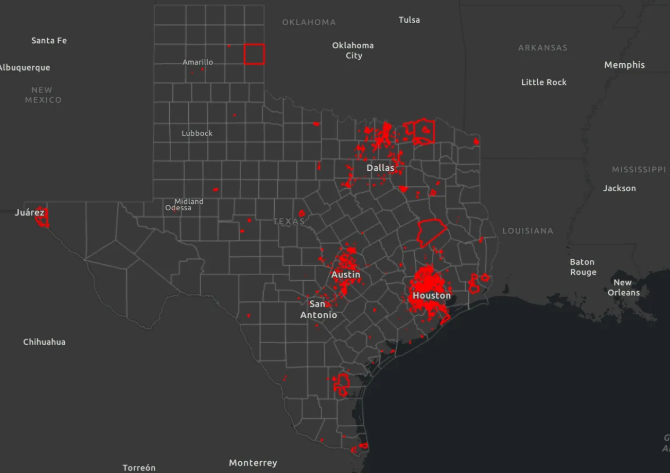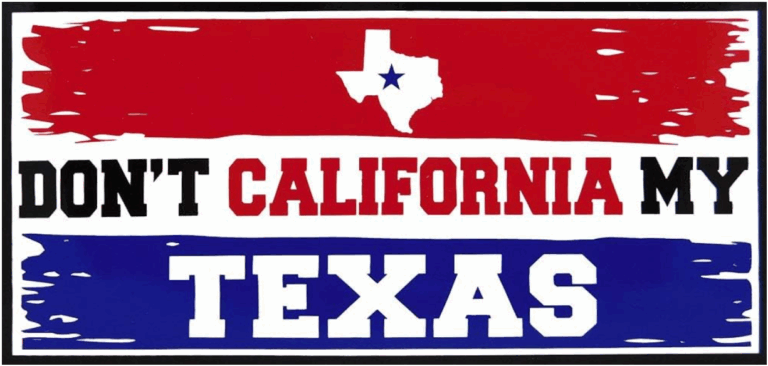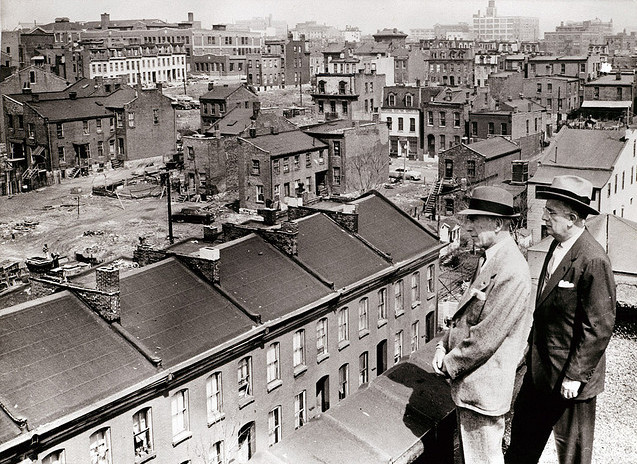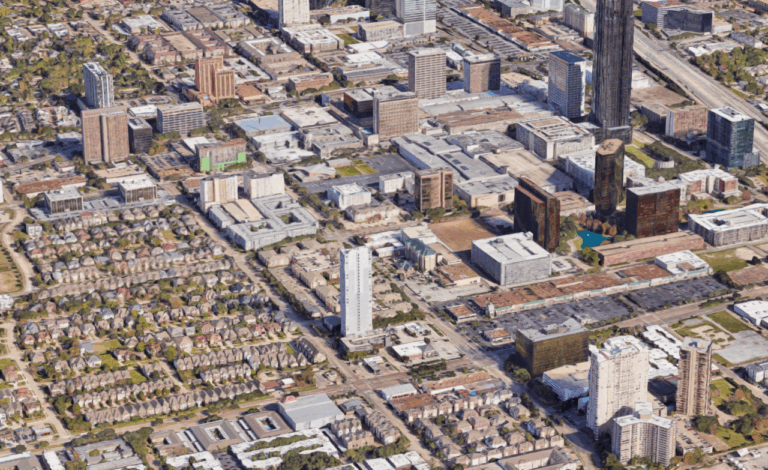Physical Address
304 North Cardinal St.
Dorchester Center, MA 02124
Physical Address
304 North Cardinal St.
Dorchester Center, MA 02124

Connor Tabarrok has an excellent new primer on Texas Municipal Utility Districts (MUDs), covering history, function, governance, and critiques.

The traditional model of cities proves useful yet again - even when researchers neglect their discipline's roots.

Are there diverse places in the U.S. where racial differences among residents are small enough to be undetectable to a typical resident? Places where Roger Starr's ideal of "integration without tears" might be a reality, where people of different races socialize as equals, share culture and priorities, and work in the same range of occupations?

Planners, like all professions, have their own useful mythologies. A popular one goes something like this: “Many years ago, us planners did naughty things. We pushed around the poor, demolished minority neighborhoods, and forced gentrification. But that’s all over today. Now we protect the disadvantaged against the vagaries of the unrestrained market.” The seasoned—which is to say, cynical—planner may knowingly roll her eyes at this story, but for the true believer, this story holds spiritual significance. By doing right today, the reasoning goes, planners are undoing the horrors of yesterday. This raises the question: are planners doing right today? That’s not at all clear. Just ask Hinga Mbogo. After emigrating from Kenya, Mr. Mbogo opened Hinga’s Automotive in East Dallas in 1986. Mr. Mbogo’s modest business is precisely the kind of thing cities need, providing a service for the community, taxes for the city, and blue-collar jobs. While perhaps not of the “creative class,” Mr. Mbogo and his small business represent the type of creative little plan that cities cultivate and depend on. Hinga’s Automotive has thrived for 19 years and looked primed for another 19. Unfortunately for Mr. Mbogo, Dallas planners had other plans. In 2005, the city rezoned the area to prohibit auto-related businesses. While rezonings—particularly upzonings—aren’t necessarily a bad thing, Dallas planners opted to force their vision through and implemented a controversial planning technique known as “amortization.” Normally when planners rezone an area, they allow existing uses that run afoul of the new code to continue operating indefinitely. These are known as “non-conforming uses” and they’re common in neighborhoods across the country, often taking the form of neighborhood groceries, restaurants, and small industrial shops. Yet under amortization, the government forces non-conforming uses to cease operating without any compensation. In the case of Hinga’s Automotive, this means […]

If you regularly read about cities, you might notice that Texas cities rarely seem to come up. We make cases for why Detroit is definitely coming back—just you wait! We come up with elaborate theories of how cities can become the next Silicon Valley. We spend hours coming up with a solution to New York City’s costumed panhandler problem. Yet the four urban behemoths of the Lone Star State—Houston, San Antonio, Dallas, and Austin—remain conspicuously absent from the conversation. Boy, has that changed. Earlier this year I wrote a sprawling defense of Houston. Scott Beyer spent the summer writing a series of articles for Forbes profiling the cool things happening in cities across the state. John Ricco recently launched the “Densifying Houston” Twitter feed and discussed the phenomenon on Greater Greater Washington. Just this past weekend, City Journal released an entire special issue dedicated to Texas. Through all this, many have been surprised to learn that a city like Houston could serve as a model for land-use policy and economic growth for struggling coastal cities. Yet two criticisms regularly seem to come up, at least related to Houston: “Houston is an unplanned hell-hole! It’s proof that land-use liberalization would be a disaster.” “Houston isn’t unplanned! It’s as heavily planned as any other city, just look at the covenants.” Since there seems to be a lot of confusion about land-use regulation and planning in Houston, here’s a quick explainer on what Houston does regulate, doesn’t regulate, and how private covenants shape the city. 1. What Houston Doesn’t Do Houston doesn’t mandate single-use zoning. Unlike every other major U.S. city, Houston doesn’t mandate the separation of residential, commercial, and industrial developments. This means that restaurants, homes, warehouses, and offices are free to mix as the market allows. As many have pointed out, however, market-driven separation of incompatible uses—think […]

California might have some competition in the race for high-speed rail. Texas Central Railway wants to begin construction on a high-speed line from Dallas to Houston as early as 2017. The current plan is to go from downtown to downtown, with possibly one stop along the way in College Station. An environmental impact assessment is under way and the hope is to be operational by 2021. The company claims that the price per ticket will be competitive with airfare and that the run will take a mere 90 minutes. To give that some context, current travel time from Houston to Dallas by car is about 3.5 hours according to Google (but closer to 4.5 according to my prior experience). While there’s a lot to be skeptical about here, the impact of connecting the nation’s 4th and 6th largest urban economies could be significant. If a high-speed line does get built and if it does manage to deliver on its specs (two major “ifs” already), it would be the equivalent of a magic portal…or a stargate…or a warp pipe…or a tesseract…or…well…the point being it would make the two places functionally much closer together, and that’s a big deal. Cities become economically vibrant through agglomeration. Bringing people closer together lowers search costs for both employers and employees. It also increases the likelihood of “creative collisions”. What high-speed rail could do is combine the benefits of agglomeration that each of these two cities already enjoy. And, as early in the day as it is, there’s already speculation that a line connecting Dallas and Houston would be a precursor to additional lines connecting all four of the state’s pillars of civilization: Dallas, Houston, San Antonio, and Austin. The unbridled optimist in me imagines high-speed rail as the embryonic bones of a future mega-city encompassing […]